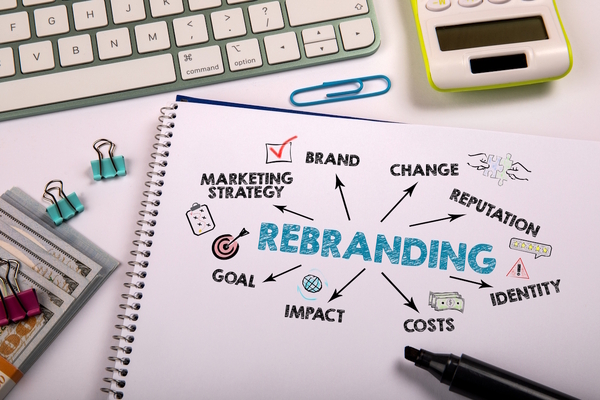Best practices for performance engineering

Mav Turner at Tricentis argues for the importance of putting user experience front and centre with performance engineering
Digital technology has revolutionised consumer behaviour. This has created enormous potential for brands to drive greater engagement and build new revenue streams.
But it has also resulted in high expectations when it comes to user experience (UX). Online and mobile brand interactions must be quick, seamless and always-on. The recent Peloton outage during its Thanksgiving ride, along with other well-known examples such as the Ticketmaster Taylor Swift ticket sale crash, have highlighted that a negative UX risks brand reputation, with many customers taking to social media to voice their discontent.
A bad customer experience (CX) risks more than just the customer relationship and perception in the market - it can detrimentally impact revenue. According to the Baymard Institute, half of the reasons that online purchases are abandoned relate to UX, from too long or complicated a checkout process to website errors and crashing.
Further research from PwC has found that 32% of customers worldwide will not just abandon a purchase, but stop interacting with a brand altogether after one single poor experience.
Excellent UX and CX performance are therefore now a must-have competitive differentiator, with data from IDC showing that improving the digital experience directly impacts the bottom line. According to their Future Enterprise Resilience and Spending survey, 34% of respondents experienced improved profit margins by investing in the digital experience.
Addressing back-end complexity
Unfortunately, it’s difficult to deliver on exceptional UX because there are so many variables at play. Applications are constantly evolving in complexity, with more and more moving parts. There’s also a greater focus on speed and gratification in the post-pandemic world.
The move to the cloud, or to cloud-based apps, makes it even more challenging to guarantee a great user experience. Many organisations mistakenly believe that cloud migration automatically means their applications will be more scalable, but this is not the case. Cloud providers only deliver infrastructure; they don’t monitor service level agreements, speed, or performance of applications. This means that if an app is poorly written, it will perform slowly.
Introducing performance engineering
To compete, businesses must prioritise a culture of performance engineering and continuous, end-to-end performance testing of applications. This allows them to anticipate user scenarios and test against them, while properly tuning the application to the infrastructure it functions within.
Unlike cloud migration alone, performance engineering does help to improve an application’s scalability, availability, and performance. A well thought out performance engineering strategy will ensure an application doesn’t degrade under heavy load and scales in predictable ways.
Without performance engineering however it’s impossible to truly measure and improve the user experience, or to manage costs. While response speed of applications is crucial for customers, usability is equally important. It’s much harder to measure, but if a user can’t figure out how to use an app, or it has errors or glitches in functionality, it can be just as frustrating.
Measuring performance across all devices and browsers
Ultimately, the user experience comes together in the browser on the desktop or on the mobile device. Performance engineering can be used to measure performance across every type of device and browser that an application can be accessed on.
By creating a simulated environment that mimics the user experience on all applicable devices and browsers, organisations can replicate scenarios such as a high load to see how particular behaviours impact the application performance, as well as monitor for any nuances that might be dependent on the operating system or hardware on which the application is accessed. The end user experience can then be optimised based on these simulated scenarios.
Market mastery to anticipate user scenarios
To properly anticipate problems, it’s critical for organisations to understand the market they are competing in. Without that understanding, all the planning in the world can still result in a poor user experience. Just ask Peloton, or Ticketmaster. But by collecting and analysing customer data, customer needs and expectations can be understood and catered for. That comprehension can be used to tune an app to work well in various potential future scenarios.
Approached properly, performance engineering ensures that apps perform well in every anticipated scenario. Clothing retailer Abercrombie & Fitch is a great example. Christmas is a key retail period for retailers - all the more so in 2020 when Covid propelled a huge increase in online shopping.
Many fell short, but Abercrombie had already spent years focusing on performance engineering and performance test automation. The company’s Quality Assurance Manager understood that any browser or application delay could mean the difference in producing either growth or loss for the business. The retailer’s holiday readiness team had already simulated tens of thousands of orders per hour, automated script maintenance, and eliminated manually coded tests. As a result, in 2020 the company achieved its best digital sales performance in over a decade.
Providing exceptional user experience and functionality should remain a paramount focus for organisations, and performance engineering represents a crucial enabler of business success in this space. Implementing thorough performance engineering across all platforms and throughout the software development life cycle helps to identify and eliminate performance bottlenecks.
By identifying these bottlenecks early, the development team can address them before they become major issues that impact the end-users. This results in a software application that is more reliable and performs better, prioritising the user experience with positive ramifications for the bottom line.
Mav Turner is CTO, DevOps at Tricentis
Main image courtesy of iStockPhoto.com

Business Reporter Team
Most Viewed
23-29 Hendon Lane, London, N3 1RT
23-29 Hendon Lane, London, N3 1RT
020 8349 4363
© 2024, Lyonsdown Limited. Business Reporter® is a registered trademark of Lyonsdown Ltd. VAT registration number: 830519543
Join the Business Reporter community today and get access to all our newsletters, and our full library of talk show episodes
Join the Business Reporter community today and get access to all our newsletters, and our full library of talk show episodes





